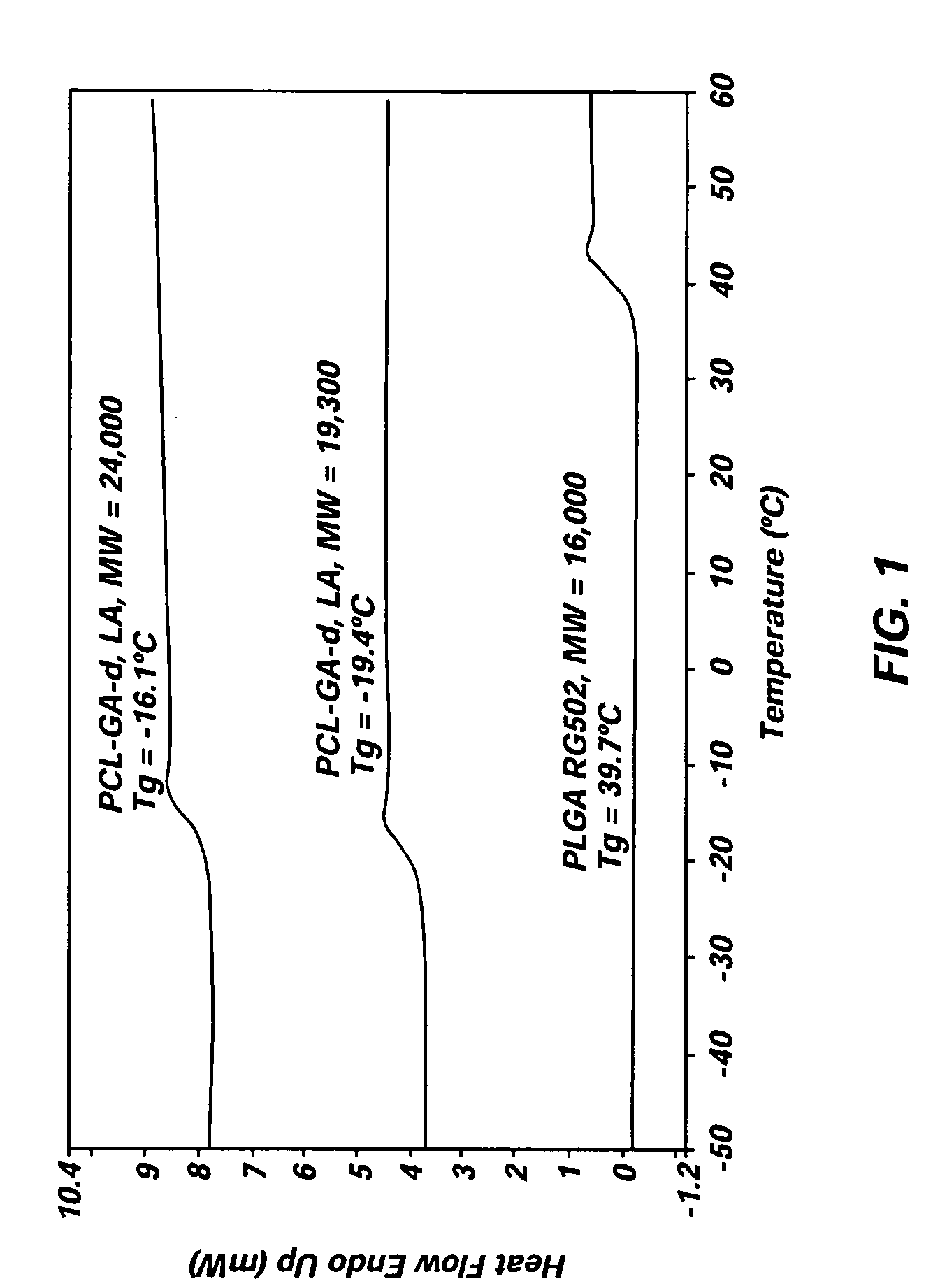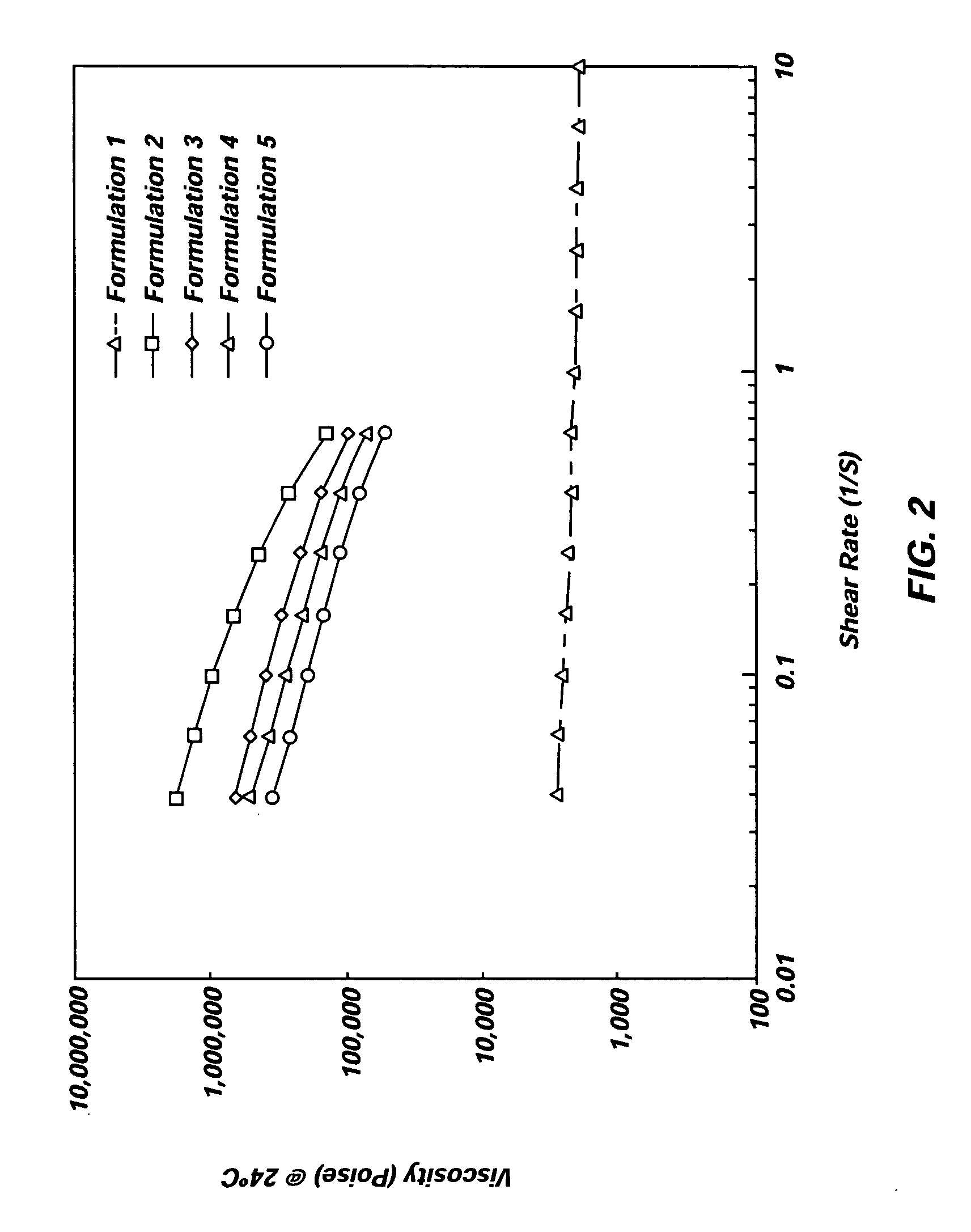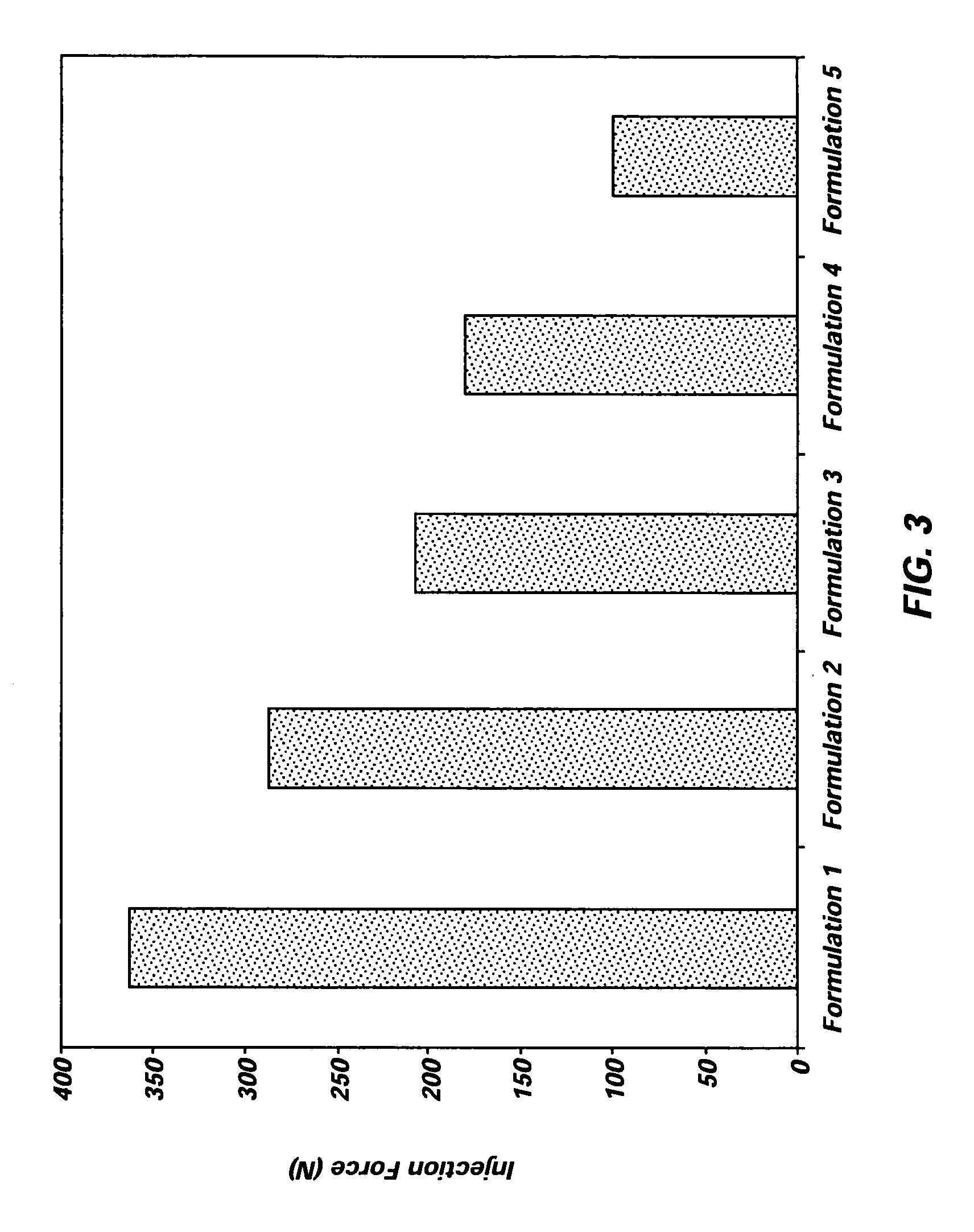Implantable elastomeric depot compositions and uses thereof
a technology of elastomeric and depot composition, which is applied in the field of implantable elastomeric depot composition, can solve the problems of adverse tissue reaction or other complications associated with the occurrence of foreign matter in bodily tissue, material not always satisfying the demand for biodegradable implants, and important limitations of their use in the body of various animals, so as to reduce the frequency of administration and improve patient complian
- Summary
- Abstract
- Description
- Claims
- Application Information
AI Technical Summary
Benefits of technology
Problems solved by technology
Method used
Image
Examples
example 1
Synthesis of Poly(ε-caprolactone-co-glycolide-co-l,lactide)(PCL-GA-I, LA) 40:55:5
Synthesis of Low Molecular Weight PCL-GA-I, LA
In the glove box, 168 μL (55 μmol) of a 0.33 M stannous octoate solution in toluene (Ethicon Inc., Cornelia, Ga., USA), 5.31 grams (50 mmol) of diethylene glycol (Fluka Chemical Co., Milwaukee, Wis., USA), 156.7 grams (1.35 mol) of glycolide (Noramco, Inc., Athens, Ga., USA), 117.0 grams (1.025 mol) of caprolactone (Union Carbide Corp., Danbury, Conn., USA), and 18.0 grams (0.125 mol) I-lactide (Purac America, Lincolnshire, Ill., USA) were transferred into a flame dried, 500 mL round bottom flask equipped with a stainless steel mechanical stirrer and a nitrogen gas blanket. The reaction flask was placed in a room temperature oil bath, heated to 190° C. and then held at 190° C. for 16 hours. The reaction was allowed to cool to 80° C., then poured out of the flask into a clean dry polypropylene jar. The terpolymer was then vacuum dried overnight at room te...
example 2
Synthesis of Poly (ε-caprolactone-co-glycolide-co-d,l,lactide)(PCL-GA-dl, LA) 40:55:5
In the glove box, 168 μL (55 μmol) of a 0.33 M stannous octoate solution in toluene (Ethicon Inc., Cornelia, Ga., USA), 2.65 grams (25 mmol) of diethylene glycol (Fluka Chemical Co., Wis., USA), 156.7 grams (1.35 mol) of glycolide (Noramco, Inc., Athens, Ga., USA), 117.0 grams (1.025 mol) of F-caprolactone (Union Carbide Corp., Danbury, Conn., USA), and 18.0 grams (0.125 mol) d,l-lactide (Purac America, Lincolnshire, Ill., USA) were transferred into a flame dried, 500 mL round bottom flask equipped with a stainless steel mechanical stirrer and a nitrogen gas blanket. The reaction flask was placed in a room temperature oil bath, heated to 190° C. and then held at 190° C. for 16 hours. The reaction was allowed to cool to room temperature overnight. The terpolymer was isolated from the reaction flask by freezing in liquid nitrogen and breaking the glass. Any remaining glass fragments were removed fro...
example 3
Differential Scanning Calorimeter (DSC) Measurements
The glass transition temperature (Tg) of PCL-GA-LA and PLGA RG502 used in the present invention was determined using a differential scanning calorimeter (DSC) (Perkin Elmer PYRIS Diamond DSC, Shelton, Conn.). The DSC sample pan was tared on a Mettler PJ3000 top loader balance. About 10 to 20 mg of polymer sample was placed in the pan. The weight of the sample was recorded. The DSC pan cover was positioned onto the pan and a presser was used to seal the pan. The temperature was scanned in 10° C. increments from −60° C. to 90° C.
FIG. 1 compares the DSC diagrams of PCL-GA-LA copolymers with either l-lactic acid or di-lactic acid and PLGA RG502 used in the formulations presented in this invention. Those data indicate that the PCL containing copolymers used in this invention had the glass transition temperatures (“Tg”) below 0° C. as opposed to ca. 40° C. for PLGA RG502, illustrating that the PCL containing copolymers are certainly i...
PUM
 Login to View More
Login to View More Abstract
Description
Claims
Application Information
 Login to View More
Login to View More - R&D
- Intellectual Property
- Life Sciences
- Materials
- Tech Scout
- Unparalleled Data Quality
- Higher Quality Content
- 60% Fewer Hallucinations
Browse by: Latest US Patents, China's latest patents, Technical Efficacy Thesaurus, Application Domain, Technology Topic, Popular Technical Reports.
© 2025 PatSnap. All rights reserved.Legal|Privacy policy|Modern Slavery Act Transparency Statement|Sitemap|About US| Contact US: help@patsnap.com



